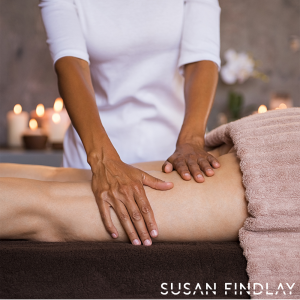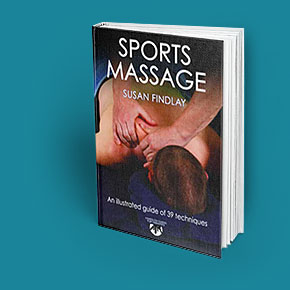Like most forms of complementary therapy, the effects of lymphatic drainage in massage are open to discussion. As is the case with all massage types, there are gleaming testimonials and positive historical reports, but scientific studies sometimes lack that conclusive evidence. Lymph drainage therapy (LDT) and Manual lymph therapy (MLT), are multifaceted forms of treatment that incorporate the principles of compression and massage-like movements. These are applied to stimulate the lymphatic system, and assist in redirecting and enhancing the lymphatic flow (1). In this case, we will refer to these types of treatment as Manual Lymphatic Drainage Techniques (MLDTs).
These can be used by medical practitioners and allied health clinicians into rehabilitation and various treatment programmes (2). Despite it being a relatively unknown form of treatment for popular audiences, it has been used since the 1930s. Dr Emil Vodder was deeply interested in the anatomy and bodywork; fascinated by the lymphatic system. This prompted him to develop a type of massage designed for this specific system. It was not until 30 years later that Vodder’s original work was recognised by doctors as a massage type that could benefit people with lymphedema (3) – a long-term chronic condition that causes swelling in the body’s tissues (4). It is a form of gentle massage that encourages the movement of lymph fluids around the body (5).
The lymphatic system can become congested easily. This may occur as a result of many factors, including illness, surgery, lack of exercise, bumps, bruises, exposure to heavy metals and toxins; tight clothing, impaired circulation, and stress (6). Lymphatic drainage is said to effectively clear this system. There are of course many successful examples. It does, however, face a number of issues with research and lacks valid and reliable means to measure the supposed changes brought about by this technique. It is an aspect of massage that divides opinion, making it a complex talking point. The purpose of this blog is to identify both sides of the discussion: the benefits and limiting factors. Hopefully you can then make a much more informed decision on why lymphatic drainage in massage may or may not be right for you.
 The Positives
The Positives
Lymphatic system enthusiasts, like Vodder, are quick to outline the various benefits associated with lymphatic drainage. There are, however, a number of fundamental values, from which various other health benefits are founded on. These fundamentals include stimulating the lymphatic system via an increase in lymph circulation; expediting the removal of biochemical wastes from body tissues; enhancing body fluid dynamics, thereby facilitating edema reduction; and decreasing the sympathetic nervous system (7).
Recent advanced medical technology has finally allowed for necessary visualisation of the lymphatic system, providing the basis for a more expansive study into the structure, function and treatment. Until recently, MLDT was seen as a treatment predominantly for lymphedema; now, it is being viewed by many as a key player in other forms of preventative health (8). Recent studies have shown that it can be helpful in reducing stress and tension. In this instance, the intensity of our touch is low. It is applied to create a relaxing and comfortable atmosphere; decreases the sympathetic fight-or-flight response and thereby increases the parasympathetic response in the body (9). These local and systemic effects are key to producing changes in serotonin levels, histamine, adrenaline and noradrenaline (10).
Studies identify another positive as its impact of inflammation and pain. The swelling, discomfort and pain characterised by inflammation can be reduced by MLDT. It does this through reducing edema, mobilising stagnant fluid and improving circulation (11). The major potential benefit of lymphatic drainage is its ability to detoxify the body. The clue is in the name. By stimulating the lymphatic system, therapists can help to facilitate the lymphatics to clear cellular wastes, foreign bodies, dead cells, toxins and excess fluid from the tissues (12). It is essentially a way to remove waste and toxins that our body may have been exposed to (13).
Another benefit is the regeneration of tissues. As MLDT is thought to assist in reducing edema, inflammation, and help to facilitate the removal of waste, it also has the potential to enhance oxygen and nutrient delivery to tissues. Certain research identifies increased blood circulation as the reason behind this. This particular notion is, however, divisive. To find out more about this topic, visit my blog on blood flow and massage. The cleansing qualities of lymphatic drainage would be more likely to enhance the delivery of oxygen and nutrients – simply clearing the path; not directly speeding it up.
Limitations
Before we get into the limiting factors, it is important to identify when lymphatic massage should not be used. This is when the client may have congestive heart failure, blood clots, kidney problems, infections and/or circulatory problems. As with all massage, therapists should always find out about these things before the session commences. This is to avoid any risk, during the therapy.
The major issue with lymphatic drainage in massage is the lack of evidence. As Dr Anne Williams suggests, the ‘limited empirical evidence base and lack of consensus on the use and efficacy of MLD means there is a lack of clarity regarding the application of MLD for people with lymphedema (14). This can be applied across most instances where lymphatic therapy may be suggested as an option. Unfortunately, much of the work and research around MLD has been descriptive, or has only evaluated the effects of combined treatments; not the specific effects of MLD alone (15).
From a sports rehabilitation and medicine perspective, this is a similar trend. The literature regarding the influence of MLDTs for specific conditions encountered in athletic injury rehabilitation is limited. Despite one of the first studies of MLD taking place around 50 years ago, the mechanisms through which MLD has its effect are not fully established. This lack of understanding is subsequently causing problems in differentiating the effect of MLD from other interventions, like compression therapy (16).
There is also a grey area surrounding this type of therapy being used for people with malignant conditions. Some studies have clearly outlined that MLDT does not increase the spread of cancer cells or accelerate the growth of tumours. There has, however, been very little research conducted around this very specific and important topic (17). This limited research in favour of MLDT is probably why many therapists are reluctant to use it so frequently.
Hopefully, you can now see why lymphatic drainage in a massage context is such a divisive topic. Most types of massage are always having to prove themselves against more conventional types of therapy. But there is a growing collection of literature and research to now support these. Despite the emerging benefits of MLDT, it still lacks the conclusive evidence needed to place it alongside more-established types of massage. The limited research poses potential risks; sometimes not worth taking. If you are offering lymphatic drainage as part of your therapy, make sure to rule out any potential adverse effects, as mentioned in this blog. The best way to do this, is by making sure you are fully aware of your client and their current health state. In this case, research is always vital.
References
1. Korosec, B. J. 2004. Manual Lymphatic Drainage Therapy. Home Health Care Management & Practice, 16(6), https://doi.org/10.1177/1084822304264618 [accessed 8 July 2020].
2. Giampietro L Vairo, Sayers John Miller, N M Cb Icolem Rier & W B Illiame Uckley (2009) Systematic Review of Efficacy for Manual Lymphatic Drainage Techniques in Sports Medicine and Rehabilitation: An Evidence-Based Practice Approach, Journal of Manual & Manipulative Therapy, 17:3, 80E-89E, DOI: 10.1179/jmt.2009.17.3.80E
3. Williams, A. 2010. Manual lymphatic drainage: exploring the history and evidence base
in British Journal of Community Nursing, [online], available at: https://www.magonlinelibrary.com/doi/pdf/10.12968/bjcn.2010.15.Sup3.47365 [accessed 8 July 20202].
4. NHS. Webpage. Lymphoedema. [online], available at: https://www.nhs.uk/conditions/lymphoedema/ [accessed 8 July 2020].
5. Eske, J. Medically reviewed by Debra Rose Wilson, Ph.D., MSN, R.N., IBCLC, AHN-BC, CHT. Medical News Today. How to perform a lymphatic drainage massage. [online], available at: https://www.medicalnewstoday.com/articles/324518#benefits [accessed 8 July 2020].
6. Korosec, B. J. 2004. Manual Lymphatic Drainage Therapy. Home Health Care Management & Practice, 16(6), [accessed 8 July 2020].
7. Giampietro L Vairo, Sayers John Miller, N M Cb Icolem Rier & W B Illiame Uckley (2009) Systematic Review of Efficacy for Manual Lymphatic Drainage Techniques in Sports Medicine and Rehabilitation: An Evidence-Based Practice Approach, Journal of Manual & Manipulative Therapy, [accessed 8 July 2020].
8. Korosec, B. J. 2004. Manual Lymphatic Drainage Therapy. Home Health Care Management & Practice, 16(6), [accessed 8 July 2020].
9. ibid.
10. Williams, A. 2010. Manual lymphatic drainage: exploring the history and evidence base
in British Journal of Community Nursing, [accessed 8 July 2020].
11. Korosec, B. J. 2004. Manual Lymphatic Drainage Therapy. Home Health Care Management & Practice, 16(6), [accessed 8 July 2020].
12. ibid.
13. Eske, J. Medically reviewed by Debra Rose Wilson, Ph.D., MSN, R.N., IBCLC, AHN-BC, CHT. Medical News Today. How to perform a lymphatic drainage massage. [accessed 8 July 2020].
14. Williams, A. 2010. Manual lymphatic drainage: exploring the history and evidence base
in British Journal of Community Nursing, [accessed 8 July 2020].
15. ibid.
16. Williams, A. 2010. Manual lymphatic drainage: exploring the history and evidence base
in British Journal of Community Nursing, [accessed 8 July 2020].
17. Korosec, B. J. 2004. Manual Lymphatic Drainage Therapy. Home Health Care Management & Practice, 16(6), [accessed 8 July 2020].

